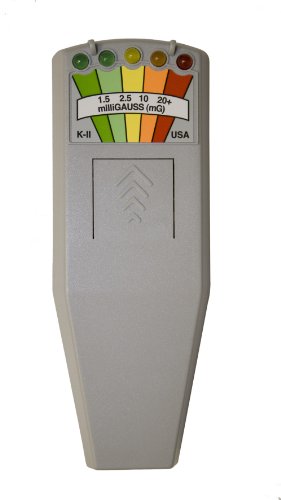Save Price K-II EMF Meter for Ghost Hunting
This on-line sellers supply the best quality and save cost value which integrated super conserve shipping (in U.S.A. only) for K-II EMF Meter for Ghost Hunting. Reading opinions gives you having a a good deal of fuller information from the cons and pros of the K-II EMF Meter for Ghost Hunting.

A built in flashlight at no extra charge. Electromagnetic fields, or EMFs, are emitted by electrical devices of all types. EMFs are everywhere, originating from appliances, cell phones, electrical wiring, and even the human body. The K-II EMF Meter helps measure these fields to identify appliances that produce high-level emissions, allowing users to make informed decisions about limiting exposure. EMF fluctuations have also been associated with locations where unexplained phenomena have been reported, including alleged hauntings. The K-II operates on a single 9V battery, and reports EMF measurements in five milliGauss ranges. Please note: this product is intended to measure electric fields, and does not detect nuclear radiation.Instantaneous response to EMF fluctuations & spikesSimple push-on/push-off operationEasy-to-read multi-segment LED displayAccuracy of 5% at 50-60 HzDetects ELF range (50 to 1,000 Hz) & VLF range (1,000 to 20,000 Hz)
You still want to buy the K-II EMF Meter for Ghost Hunting?. TheK-II EMF Meter for Ghost Hunting is basically a very good product. If compared to the others. K-II EMF Meter for Ghost Hunting is clearly better.Buy today, you might have a saveprice price, you should check the price before you buy.Of course, everybody wants to have their been then you should check-sized price is at the bottom.
Click to get More Price K-II EMF Meter for Ghost Hunting
K-II EMF Meter for Ghost Hunting Feature


No comments:
Post a Comment